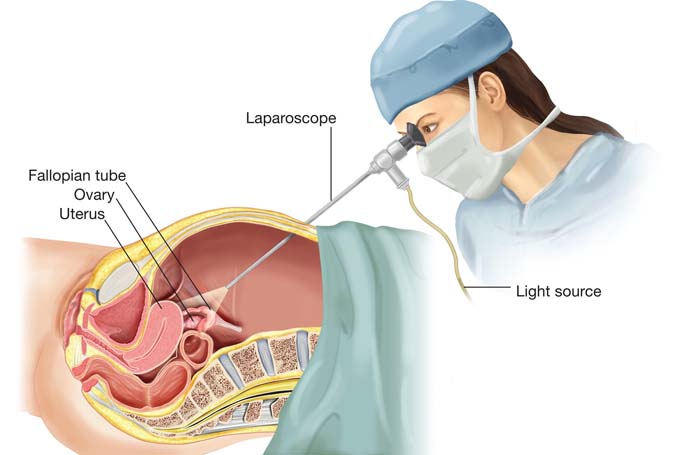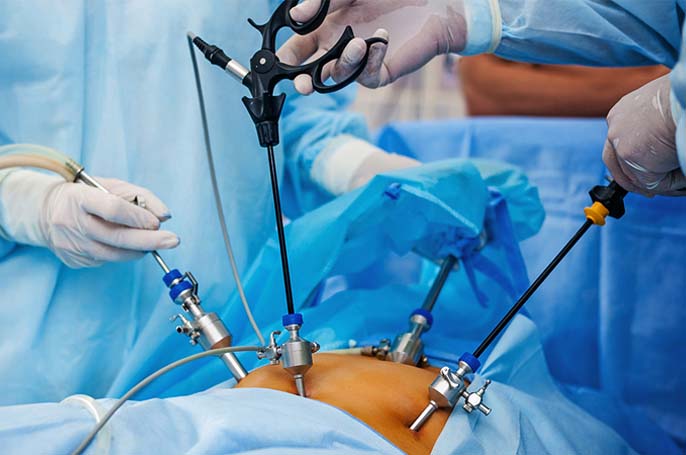Laproscopy

Laparoscopy is a minimally invasive surgical technique where small cuts are made on the abdomen and then it is distended with gas. Then the laparoscope, a long, thin tube with a high-intensity light and a high-resolution camera at the front is inserted through an incision in the abdominal wall. As the Laparoscope moves along, the camera relays images to a video monitor. This in turn allows the surgeon to see inside the abdomen to evaluate the uterus, tubes and ovaries real time and perform the needed surgery with ease. Laparoscopic surgery also called minimally invasive surgery in which operations are performed through small incisions.
A laparoscope is a slender, lighted telescope. It allows your doctor to see inside your body. Diagnostic laparoscopy can determine whether you have conditions such as endometriosis or fibroids. It can also be a form of treatment. With miniaturized instruments, your doctor can perform a variety of surgeries. These include:
- ovarian cyst removal
- tubal ligation, which is surgical contraception
- hysterectomy
Laparoscopy generally has a shorter healing time than open surgery. It also leaves smaller scars. A gynecologist, general surgeon, or another type of specialist may perform this procedure.
Who needs it ? When Is Laparoscopy recommended ?
- Women having difficulty in getting pregnant
- To investigate the cause of lower abdominal pain and painful periods
- To investigate the cause of pain during sexual intercourse.
- To perform the Dye Test to check if the fallopian tubes are open
- To diagnose gynaecological conditions such as tubal disease, genital tuberculosis, fibroids, ovarian cysts etc. They can often be corrected with operative laparoscopy
- To see and treat conditions such as endometriosis and adhesions (scar tissue) that are difficult to see on ultrasound scan
- To obtain tissue for biopsy in suspected cases of the abdominal mass or Tuberculosis.
- To remove damaged tubes before commencing IVF, to increase the success rate
- To remove the fallopian tube in case of ectopic pregnancy
- For women who do not wish any more children – Laparoscopic Sterilisation
Diagnostic laparoscopy can be very helpful for infertile patients
Why get a laparoscopy?
Your gynecologist may recommend this procedure to:
- Confirm the cause of a condition when other diagnostic tests such as ultrasound cannot.
- Find the cause of pelvic pain.
- Examine a tissue mass by biopsy , removal of cysts and fibroids.
- Look for blockage of the fallopian tubes or other causes of infertility.
- Confirm and treat endometriosis.
Common complications include :
- Pain : After a laparoscopy it is common to have some pain in the shoulders due to a small amount of gas staying in the tummy. The body usually absorbs the gas naturally over the next 24 hours, which will ease the symptoms. Pain killers are advised for 5 days
- Infection – in the skin wound and urine infection. To prevent this, antibiotics are commenced before the procedure.
Rare complications include :
- Bleeding
- Blood clots
- Damage to internal organs
- Developing a hernia
- Failed procedure


